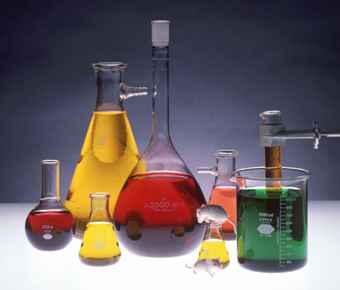Silicone (silicosis)
The disease dates back centuries, but researchers say the booming popularity of countertops made of engineered stone, which has much higher concentrations of silica than many kinds of natural stone, has driven a new epidemic of an accelerated form of the suffocating illness.
As the dangerous dust builds up and scars the lungs, the disease can leave workers short of breath, weakened and ultimately suffering from lung failure.
"You can get a transplant," Cabrera told the man in Spanish, "but it won't last."
Instead of cropping up in people in their 60s or 70s after decades of exposure, it is now afflicting men in their 20s, 30s or 40s, said Dr. Jane Fazio, a pulmonary critical care physician who became alarmed by cases she saw at Olive View-UCLA Medical Center. Some California patients have died in their 30s.
"They're young guys who essentially have a terminal diagnosis," Fazio said.
To read the article, click here.
To read the OSHA Hazard Alert about silica, click here.

There are thousands of harmful chemicals in our food, water, soil and air, and the number is rapidly increasing.
We cannot begin to provide details on the thousands of chemicals being used today, so we selected the following six categories.
Dimethyl fumarate (DMF)
Dimethyl fumarate (DMF) is a dangerous chemical that has been banned in several countries, but is (wrongly) still allowed in the U.S.
In fact, the manufacture of products with DMF in the European Union has been banned since 1998, and imports of products with DMF (to the European Union) have been banned since 2009.
People can be exposed to DMF through these routes of exposure:
- Leather used to make furniture is often treated with DMF with the alleged purpose of reducing moisture and mold.
- DMF is also included in millions of desiccant packets/sachets (see a sample picture in the next column) that are included in leather goods, shoes, riding helmets, non-leather furniture, etc. These desiccant packets/sachets are made of breathable fabric and contain a white crystalline powder (DMF).
- DMF is released through vapors and infects/contaminates these items and can also contaminate other nearby furniture and household items and clothing of the person who sits on the contaminated item.
For additional information about Dimethyl fumarate (DMF), click here.
Personal Care Products
Many of your common, every day personal care products contain harmful chemicals. These products include cosmetics, soaps, shampoos and other personal hygiene items. We will discuss just two of the chemicals found in personal care products.
For additional information about chemicals in personal care products, click here .
Pesticides
Pesticides are chemicals used to kill or limit the growth of numerous types of pests. Included in this grouping are herbicides (kill plants), fungicides (kill fungi), insecticides (kill insects) and numerous other classes. They are designed to disrupt biological systems.
Pesticides are used extensively in farming and are also used in homes, schools and businesses. Ten of the twelve most dangerous organic chemicals are pesticides.
For additional information about pesticides, click here .
Phthalates
Phthalates are man-made chemical compounds that are primarily used as plasticizers (i.e., substances added to plastics to increase their flexibility, transparency, durability and longevity), but they are also added to food, beverages, spices, drugs, fragrances, air fresheners and many personal care products.
Numerous studies have shown that phthalates are harmful and can cause multiple health effects including impaired sperm quality and motility, respiratory symptoms, thyroid problems, and negative effects on prenatal development, reproductive hormones and pregnancy outcome.
For additional information about phthalates, click here.
Trichloroethylene
TCE causes cancer, is linked to miscarriages and congenital heart disease, and is associated with a 500% increased risk of Parkinson’s disease.
Trichloroethylene (TCE) is an industrial solvent used in industrial solvents, commercial dry cleaners and some household products like cleaning wipes, paint removers and carpet cleaners.
There are many different types of solvents including acetone, benzene, ethanol, hexane, methanol, toluene, trichloroethylene and xylene.
For additional information about solvents, click here.